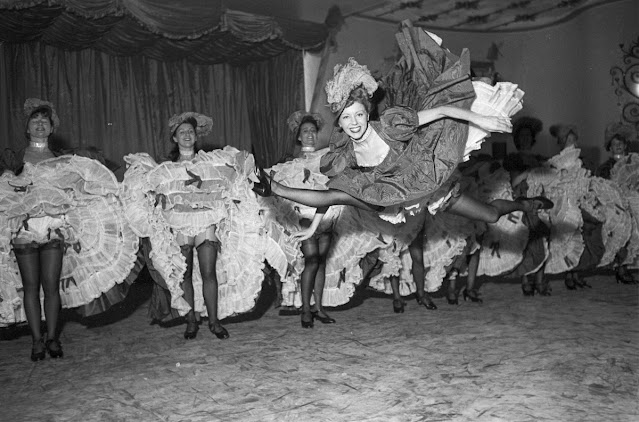While it may be surprising, there is not much to be found about the exact origin of the can-can. Where it started is, of course, in France, but who first choreographed and danced it is a bit of a mystery. It is supposed that the can-can came from some of the final figures of the couples set dance, the quadrille, where there were exuberant arm gestures and some high kicks involved. However, who first created the raucous high kicks, jump splits, and derriere-flashing dance sets and named it the can-can is not well documented.
The can-can is believed to have evolved from the final figure in the quadrille, a social dance for four or more couples. The exact origin of the dance is obscure, but the steps may have been inspired by a popular entertainer of the 1820s, Charles Mazurier, well known for his acrobatics, including the grand écart or jump splits—both popular features of the can-can.
The dance was considered scandalous, and for a while there were attempts to suppress it. This may have been partly because in the 19th century, women wore pantalettes, which had an open crotch, and the high kicks were intentionally revealing. There is no evidence that can-can dancers wore special closed underwear, although it has been said that the Moulin Rouge management did not permit dancers to perform in “revealing undergarments.” Occasionally, people dancing the can-can were arrested, but there is no record of its being banned, as some accounts claim. Throughout the 1830s, it was often groups of men, particularly students, who danced the can-can at public dance-halls.
As the dance became more popular, professional performers emerged, although it was still danced by individuals, not by a chorus line. A few men became can-can stars in the 1840s to 1861 and an all-male group known as the Quadrille des Clodoches performed in London in 1870. However, women performers were much more widely known.
By the 1890s, it was possible to earn a living as a full-time dancer and stars such as La Goulue and Jane Avril emerged, who were highly paid for their appearances at the Moulin Rouge and elsewhere. The most prominent male can-can dancer of the time was Valentin le Désossé (Valentin the Boneless), a frequent partner of La Goulue. The professional dancers of the Second Empire and the fin de siècle developed the can-can moves that were later incorporated by the choreographer Pierre Sandrini in the spectacular “French Cancan,” which he devised at the Moulin Rouge in the 1920s and presented at his own Bal Tabarin from 1928. This was a combination of the individual style of the Parisian dance-halls and the chorus-line style of British and American music halls.




















0 comments:
Post a Comment